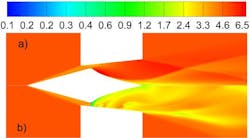Researchers push 255 Tbps over multi-core fiber
As noted by CablingInstall.com's sister site Lightwave, a chronicler of the fiber-optic telecommunications industry, researchers at Eindhoven University of Technology (TU/e) in the Netherlands and The College of Optics and Photonics at the University of Central Florida (CREOL) have reported in the journal Nature Photonics the successful transmission of 255 Tbps over multicore optical fiber.
The new fiber has seven different cores through which light can travel, and each core can support three different spatial modes via spatial division multiplexing (SDM). Researchers are exploring SDM as a promising way to increase the capacity and reduce the costs of transmission systems in the future -- when the capacity of fibers in the ground has been exhausted.
RELATED ARTICLES
Automated process simplifies alignment, splicing of multicore optical fibers
Multicore optical connector cleaner
Customized multicore optical fibers for reduced-size data cables
The researchers described the innovation as "going from a one-way road to a seven-lane highway," adding that the use of multiple spatial modes is "as if three cars can drive on top of each other in the same lane." Combining those two methods increases the transmission capacity of the fiber by a factor of 21 compared to standard optical fibers that have only one singlemode core.
"This new type of fiber could be an answer to mitigating the impending optical transmission capacity crunch caused by the increasing bandwidth demand," the researchers said, via a press release.
This isn't the highest capacity reported to date over a single fiber. Last year, researchers from NEC and Corning claimed 1.05 Pbps transmission over a single optical fiber containing 12 singlemode and two multimode cores. Europe's MODE-GAP program, in which the COBRA Institute at Technische Universiteit Eindhoven is active, is also looking at SDM and various new fiber types, as reported by Lightwave.
The Dutch and U.S. researchers believe their particular fiber design looks promising. "At less than 200 microns in diameter, this fiber does not take noticeably more space than conventional fibers already deployed," said Dr. Chigo Okonkwo, an assistant professor in the Electro-Optical Communications (ECO) research group at TU/e. "These remarkable results definitely give the possibility to achieve petabit-per-second transmission, which is the focus of the European Commission in the coming seven-year Horizon 2020 research program," he added.
Source: Lightwave
